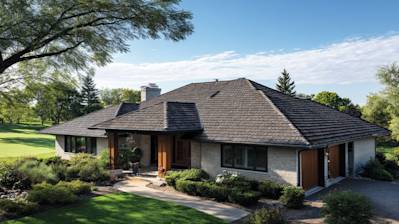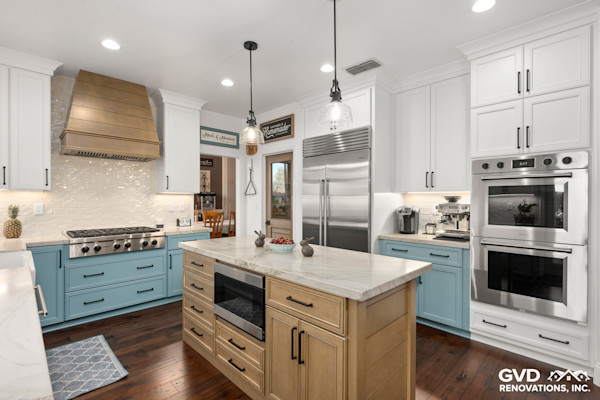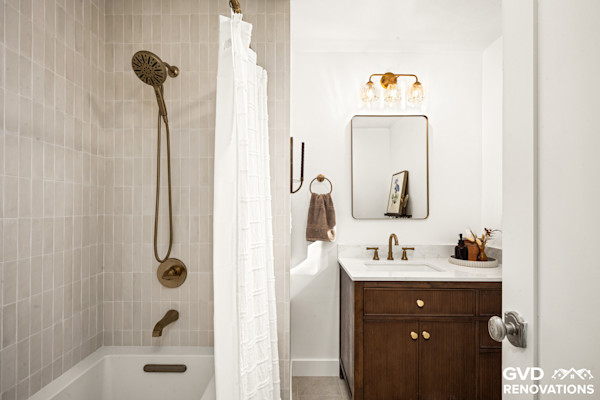Searching for the most reliable, durable, and cost-effective roofing material is more like finding the ideal home--it must be functional, aesthetically pleasing, and safeguard your biggest investment. Enter EPDM roofing, one of the premium solutions on the market today.
This detailed info-guide is dedicated to unveiling the wealth of benefits linked to EPDM roofing, showcasing why this option may be the robust solution for your climax roofing needs.
Understanding the Basics of EPDM Roofing
Ethylene Propylene Diene Monomer (EPDM) is a form of synthetic rubber respected for its durability and application versatility. Predominantly used for low-slope buildings, EPDM roofing stands out for its low-maintenance needs, resistance to harsh weather, and extensive lifespan.
Hallmarks of Notable Quality: Single-Ply EPDM Roofing
Single-ply EPDM roofing is a distinguishing feature of this roofing system, presenting an array of beneficial attributes:
- Superior Durability: Withstanding the harsh seasonal changes, ozone, UV radiation, and acidic rain, EPDM roofing promises to serve for decades.
- High Flexibility: Unmatched in flexibility, EPDM roofing can expand or contract without losing its shape, maintaining its structural integrity regardless of temperature fluctuations.
- Eco-friendly: Leveraging recycled materials during its production, EPDM roofing also reflects heat, lessening the strain on your cooling systems in the summer months.
The Manufacturing Process of EPDM Roofing
Understanding the manufacturing process of EPDM roofing sheds light on its impressive performance.
The process begins with the synthesis of ethylene, propylene, and a small amount of diene monomer. After heating these components under pressure, they transform into a polymer, mixed with carbon black, processing oils, curing agents, and stabilizing additives. Once integrated, the mixture undergoes vulcanization, converting it into a flexible and resilient sheet.
The Three Unique Forms of EPDM Roofing
EPDM roofing comes in three primary forms, differing in their thickness and color:
- Black EPDM: The traditional and most common variety, recognized for its excellent heat absorption properties.
- White EPDM: Reflects sunlight and heat more effectively, offering energy-saving benefits in warmer climates.
- Reinforced EPDM: Combines polyester or fiberglass reinforcement sandwiched between two layers of EPDM for improved puncture resistance.
EPDM Roofing Installation Methods
The installation method for EPDM roofing can significantly influence its performance and longevity. Here are the three primary installation methods:
- Ballasted System: Hold the EPDM sheets with heavy stones or pavers, offering a low-cost and quick installation but challenging if frequent roof inspections or maintenance is required.
- Fully Adhered System: Uses water or solvent-based adhesives to bond the membrane to the insulation or deck, offering the highest wind uplift resistance.
- Mechanically Fastened System: Fastens the EPDM membranes using metal or plastic plates screwed through the membrane and into the roof deck or insulation.

Frequently Asked Questions about Epdm Roofing
Is EPDM Roofing resistant to punctures and tears?
Yes, EPDM roofing is notably resistant to punctures and tears. This resistance greatly contributes to the longevity and durability of the material. However, like all roofing materials, it's not invincible and should still be well-maintained and checked regularly for damages.
How much does EPDM Roofing weigh?
EPDM roofing is known for being lightweight. The specific weight can vary based on the thickness of the EPDM material and the roofing system, but even the heaviest EPDM roofing is lighter than most other commercial roofing materials. Its light nature allows for easier and faster installations.
Can EPDM Roofing be used on residential properties?
While EPDM roofing is typically seen on commercial properties with flat roofs, it can also be an excellent choice for residential properties. The material's durability and long lifespan make it a reliable choice for homeowners, especially those with flat or incredibly low sloped roofs.
Can EPDM Roofing be installed over existing shingles?
In many cases, EPDM roofing can indeed be installed over existing shingles. This can significantly reduce disposal costs and minimize the environmental impact. However, it's essential to check building codes in your area, as some forbid this practice.
What's the difference between black and white EPDM Roofing?
The major difference between the two is the way they react to sunlight. Black EPDM roofing absorbs the heat, which can be beneficial in northern regions with cooler climates. On the other hand, white EPDM roofing reflects the sun's rays and keeps the building cool, ideal for hotter climates.
How is EPDM Roofing adhered to the roof surface?
There are three common methods for adhering EPDM Roofing: fully adhered, mechanically fastened, and loose-laid. The fully adhered method involves applying a layer of adhesive to the entire roof deck and sticking the EPDM material to it. The mechanically fastened system attaches the EPDM sheets to the deck using screws and plates. The loose-laid method, meanwhile, lays the EPDM materials out loosely and holds them down with ballast stones.
Does EPDM Roofing require any special maintenance?
While EPDM roofing is highly durable and robust, like all roofing types, it still requires regular maintenance. Regularly cleaning the roof and removing debris will help extend the lifespan of your EPDM roof. It's also advised to get your roof inspected by a professional annually to spot and repair any minor damages early.
Can EPDM Roofing be repaired easily?
Yes, EPDM roofing can be repaired relatively easily compared to other materials. Small punctures and tears can be repaired using an EPDM primer and repair tape. Larger damages typically require an EPDM patch. However, it's advisable to get a professional roofer to inspect and perform the necessary repairs to ensure the longevity of the roof.

Pros of EPDM Roofing
Durability and Longevity
One of the significant advantages of EPDM roofing is its durability and longevity. EPDM roofs can last anywhere between 20 to 30 years, thanks to their resistance to UV radiation, ozone, and weathering. Even in extreme weather conditions, these roofs tend to hold their integrity and can bounce back from impacts that could potentially damage other materials.
Cost-effectiveness
Another key benefit of choosing EPDM roofing is its cost-effectiveness. While the initial cost can seem substantial, its longevity compared to other materials can lead to significant savings in the long run. More so, the costs of repairs, maintenance, and even replacements are quite low, further adding to the value-for-money aspect of this roofing system.
Ease of Installation
EPDM roofing is easy to install with simple tools and doesn't require any special equipment. There is often no need for torches or other heating equipment, reducing the risk of accidents during installation. It's lightweight property facilitates easier handling and quicker installation times, which could bring down labor costs.
Energy Efficiency
EPDM roofs are excellent insulators, preventing unwanted heat loss during winter and reducing heat gain during summer. Thus, these roofs can help lower heating and cooling costs, contributing to significant energy savings over time.
Flexibility and Adaptability
Given the extreme temperature fluctuations roofs have to endure, flexibility is a crucial characteristic for any roofing material. EPDM roofs don't harden, crack or peel, making them highly adaptable to changing weather conditions.
Environmental Friendliness
EPDM roofing is recyclable, and its production process is cleaner compared to some other roofing materials, making it a more environmentally friendly option. Moreover, because of its high energy efficiency, it can even contribute to reducing the overall carbon footprint of a building.
Cons of EPDM Roofing
Appearance
Perhaps the most glaring downside to EPDM roofing is its aesthetics. In its traditional form, EPDM roofing is black, which may not complement every architectural style or design. If you're looking for a variety of color selections or a more distinct look, EPDM might not be your best option.
Puncture Resistance
Even though EPDM has excellent resilience against weathering and UV radiation, it's not particularly resistant to punctures. Falling branches, walking on it, or improper installation can easily tear the roofing material, resulting in potential leaks.
Seams Vulnerability
The seams where separate sheets of EPDM material meet can be especially susceptible to leaks and deterioration over time. While advanced techniques have mitigated this issue to some degree, it still remains a potential weak point in the system.
Inconsistent Quality
Like with any product, the quality of EPDM roofing can vary significantly based on the manufacturer. Some brands may be notably less durable than others, leading to a shorter lifespan of the roofing. Hence, thorough research into brands and suppliers is strongly advised before purchasing.
Poor Performance in High Heat
Despite their numerous advantages, EPDM roofs do not perform well in extremely high heat conditions. Long exposure to intense sunlight or heat can lead to shrinking and cracking, which ultimately weakens the membrane.

Myths and Misconceptions About EPDM Roofing
EPDM roofing, also known as ethylene propylene diene terpolymer roofing, is a popular choice for commercial buildings and residential flat roofs. Despite its wide use and numerous advantages, there are several myths and misconceptions surrounding EPDM roofing. This misinformation can significantly impact people's decisions when it comes to choosing their roofing material, and it's time to clear the air.
Myth 1: EPDM Roofing is Not Durable
Origins of the Myth
The belief that EPDM roofing is not durable originates from comparing it with traditional roofing materials like metal or asphalt shingles, which are typically used for sloped roofs and have a reputation for durability.
The Reality
In fact, EPDM roofing is highly durable. It is resistant to hail, UV radiation, thermal shock, and cyclic fatigue. If installed and maintained properly, an EPDM roof can last for 20-30 years.
Myth 2: EPDM Roofing Cannot Withstand Heavy Wind
Origins of the Myth
This misconception stems from the fact that EPDM roofing is lightweight. Some people believe that this makes it vulnerable to being ripped off by strong winds.
The Reality
Contrary to this belief, EPDM roofing, when properly installed and adhered, can withstand heavy winds just as effectively as other roofing materials. The key is in the correct installation and the use of high-quality adhesives.
Myth 3: EPDM Roofs are Prone to Leaking
Origins of the Myth
This myth about EPDM roofing is probably due to instances of poor workmanship and improper installation causing leaks.
The Reality
If an EPDM roofing system is correctly installed and properly maintained, it is highly waterproof and rarely leaks. The fully adhered or mechanically fastened methods of EPDM installation provide excellent resistance against leakages.
Myth 4: EPDM Roofs are Not Energy-Efficient
Origins of the Myth
Most common types of EPDM are black, which absorbs more sunlight and heat. These characteristics led to the misconception that EPDM roofs do not maintain the building cool in summer.
The Reality
Although it's true that black EPDM roofs absorb heat, light-colored (typically white) EPDM roofing is also available. Called Cool Roofs, these contribute to lowering cooling costs during summer months by reflecting sunlight. Moreover, black EPDM roofs can actually contribute to warmth and lower heating costs during the winter.
Myth 5: EPDM Roofing is Hard to Install
Origins of the Myth
Like any professional trade, there is skill and knowledge required to correctly install an EPDM roof. This leads some to believe that the installation process is overly complex or impossible to DIY.
The Reality
While professional installation is always recommended for the best results, EPDM roofing is not exceptionally difficult to install compared to other types of roofing. EPDM roofing can come in large sheets up to 50 feet wide, making it easy to cover large areas quickly.
Myth 6: EPDM Roofs can't be Repaired
Origins of the Myth
The idea that EPDM roofs can't be repaired likely originates from people confusing it with other types of roofing that are difficult to repair once damaged.
The Reality
Contrarily, one of the major advantages of EPDM roofing is that it's repairable. With proper tools, materials, and methods, damaged EPDM roofs can be effectively and economically repaired, extending their service life.
Myths and misconceptions can prevent us from making informed decisions. Education about products like EPDM roofing is the best way to break these down. It is always recommended to speak to an expert or do extensive research before deciding on your roofing material to ensure it fits your specific needs and conditions.
Summary
While there's a whole number of different roofing materials available on the market, EPDM Roofing stands out due to its durability and versatility. This cost-effective solution has become a go-to for both homeowners and commercial properties looking for a reliable, low-maintenance roofing solution. The rubber-like elasticity of EPDM weathers well and it can withstand extreme temperatures, making it a practical choice for a wide variety of climates.
The installation process of EPDM Roofing is straightforward, another appealing factor that makes it so popular. Whether you're opting for a fully adhered, mechanically attached, or ballasted system, a professional roofer can get the job done quickly and efficiently. Plus, repairs on an EPDM roof are also relatively simple. If a patch job is needed, it can usually be carried out with an EPDM patch kit, eliminating the need for complete top-rated Sacramento roof replacement in the event of minor damage.
EPDM Roofing is not only functionally efficient but is also environmentally friendly. Its long-life expectancy and recyclability make it a sustainable choice for those conscious about their ecological footprint. EPDM maintains a stable temperature in the building, reducing energy costs and contributing to a healthier environment. So, if you are on the lookout for a roofing material that is durable, easy-to-install, and eco-friendly, EPDM roofing could be the ideal choice to meet your needs.
About GVD Renovations & Remodeling
GVD Renovations & Remodeling is a locally-owned home renovation company based in Roseville, CA. With a knack for delivering the highest quality of craftsmanship, we specialize in upgrading both the interiors and exteriors of your home. Our experts offer personalized solutions for kitchen and bathroom remodels, window and door replacements, siding installation, and other home renovation projects. We are committed to transforming your living space into a beautiful and functional environment that meets your lifestyle and budget. Rest assured, GVD Renovations & Remodeling is your Roseville neighborhood renovation ally, committed to making your home improvement dreams come true!
This article is for general information only and not professional advice. Always consult a licensed contractor before making project decisions. Product details, specifications, or warranties may have changed since publication. Brand and product mentions reflect opinion, not endorsements or guarantees.
Tags: rubber roofing, commercial roofing, waterproof roofing,





















